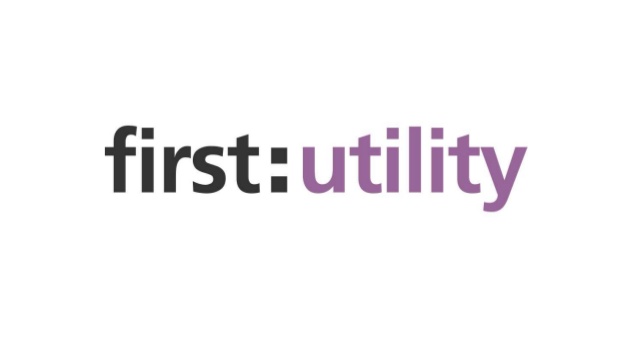For enterprises navigating the complex landscape of search technologies, Apache Solr often emerges as a powerful candidate. However, for organizations like yours, the journey from considering an open-source platform to a fully operational, high-performing, and secure enterprise search solution is filled with critical questions.
At Sirius, we believe in radical transparency and a core philosophy we call "You Ask, We Answer." This means we are committed to providing you with the most honest, comprehensive answers to your toughest questions, empowering you to make the best decisions for your business. We won't shy away from the challenges or the "elephants in the room". Instead, we'll address them head-on, just as you would expect from a trusted partner.
Here, drawing directly from industry insights, we answer the top questions organizations like yours have about Apache Solr.
What Exactly Is Apache Solr, and Why Should My Enterprise Consider It?
You're likely looking for a robust search platform, and Apache Solr is certainly one of the industry's leaders. Apache Solr is an open-source enterprise search platform, built on Apache Lucene and written in Java. It's not just a small-scale tool; major platforms such as eBay, Netflix, and Twitter use it for large-scale search and analytics.
Think of Solr as a standalone full-text search server. It allows you to index documents in various formats like JSON, XML, CSV, or binary via HTTP POST requests, and retrieve results in similar formats via HTTP GET.
Here’s why Solr is such a compelling choice for enterprise search:
- Comprehensive Search Capabilities: Solr offers advanced full-text search, including support for phrases, wildcards, joins, and grouping across diverse data types. It provides hit highlighting, faceted search, near real-time (NRT) indexing, dynamic clustering, and robust database integration. It even handles rich document formats like PDFs and Microsoft Word files seamlessly using Apache Tika.
- Scalability and Fault Tolerance: Solr is engineered for high scalability and fault tolerance, making it ideal for mission-critical applications. Its distributed architecture, known as SolrCloud, enables seamless scaling across multiple nodes through sharding and replication, allowing it to manage vast amounts of data and high traffic volumes effectively. This design ensures redundancy and automatic failover, contributing to continuous availability.
- High Performance: Solr is optimized for high-volume traffic and rapid search operations, consistently delivering high-speed search experiences even with extensive datasets. It has demonstrated impressive query volumes (e.g., up to 12,000 queries per second) and high indexing speeds (e.g., 220GB per hour for 4k documents) in production environments.
- Customization and Flexibility: Its open-source nature, flexible configuration, and extensible plugin architecture allow for deep customization to align with your specific enterprise requirements, effectively mitigating vendor lock-in concerns.
- Proven Track Record: Solr powers search applications for large enterprises globally, solidifying its standing as a mature and reliable choice.
How Does Solr Compare to Elasticsearch, Especially When It Comes to Capabilities and Licensing?
It's common for organizations to compare Solr with Elasticsearch, as both are powerful, open-source search platforms built on Apache Lucene, offering comparable speed and performance depending on the use case. However, there are distinctions that influence their suitability for different enterprise needs, especially concerning what truly matters to your business:
- Scalability and Ease of Use:
- Elasticsearch is often perceived as more straightforward to scale due to its automatic data distribution and internal cluster coordination, eliminating the need for an external ZooKeeper ensemble.
- SolrCloud also supports seamless horizontal scaling but typically requires more explicit and manual configuration, including the setup and management of Apache ZooKeeper.
- Real-time Capabilities:
- Elasticsearch generally excels in real-time distributed search and analytics, making it particularly well-suited for scenarios requiring immediate content updates and comprehensive log analysis (often leveraged with the ELK Stack).
- Solr provides Near Real-Time (NRT) indexing, but it may exhibit slightly more latency compared to Elasticsearch in highly dynamic, real-time update environments.
- Querying and Customization:
- Solr often stands out due to its advanced querying capabilities, extensive customization options, and native faceted search features. While Elasticsearch continues to enhance its full-text search features, Solr has historically offered a broader scope of functionalities for complex query handling and information retrieval.
- Community and Support:
- Both platforms benefit from large, active communities.
- Elasticsearch's development and commercial support are more centralized through Elastic employees.
- Solr's development is community-driven, with committers assigned based on merit, and commercial support is available from various third-party vendors.
- Schema Approaches:
- Solr traditionally operates with a managed-schema file, necessitating explicit schema definitions, although it can accept schemaless documents.
- Elasticsearch, conversely, is more schemaless by default, inferring schema from ingested data, which can simplify initial ingestion processes.
- Licensing: This is a critical consideration for enterprises.
- Apache Solr continues to be distributed under the permissive Apache 2.0 License. This license is widely accepted for commercial use without substantial restrictions on how the software can be utilized or offered as a service.
- Elasticsearch transitioned from the Apache 2.0 License to the Server Side Public License (SSPL) in 2021. The SSPL is often viewed as a "source-available" license rather than a traditional open-source license, specifically designed to prevent cloud providers from offering the software as a service without a commercial agreement. For organizations with strict open-source policies or those planning to build and offer products/services on top of their search platform, Solr's continued adherence to the Apache 2.0 license avoids potential legal complexities and concerns about vendor lock-in or future licensing changes.
What Are the Operational Realities and "Problems" of Deploying and Managing Solr at Scale?
Now, let's address the "elephant in the room"—the challenges and complexities. While Solr is powerful and "free," its successful implementation in an enterprise environment comes with significant operational realities that you need to be aware of.
- Not a "Set-It-and-Forget-It" Solution: Fully leveraging Solr's capabilities for unique enterprise needs often requires substantial development or configuration effort. This reliance on internal technical expertise or external consulting for complex implementations can translate into considerable personnel costs, which are frequently underestimated when organizations initially perceive "free" open-source software as having no associated cost. The true cost of ownership extends beyond licensing to encompass specialized talent and ongoing effort.
- Security is Not Default: Solr is unsecured upon initial installation, necessitating immediate and diligent configuration of security measures. This includes enabling authentication and authorization, and encrypting data in transit (TLS/SSL) and at rest. Apache ZooKeeper, central to SolrCloud, also defaults to an "open-unsafe ACL" (Access Control List), meaning anyone has full permissions, which is a significant security liability.
- Hidden Memory Complexities: A critical but subtle aspect of memory management involves off-heap memory, particularly concerning DocValues. While DocValues are disk-backed, they consume off-heap virtual memory through memory-mapped I/O (MMapDirectory), which can lead to "Mapped Buffer Exhaustion" and OutOfMemory errors even when the JVM heap appears normal. This makes diagnosis significantly more challenging and requires specialized knowledge and tools to inspect OS-level memory mapping.
- Indexing Trade-offs: There is an inherent trade-off between data freshness and indexing performance. More frequent updates improve search accuracy but degrade performance due to overhead. Conversely, less frequent updates improve performance but result in delays for new content to appear. This balance is a critical operational decision that requires close collaboration between business stakeholders and technical teams.
- Schema Changes and Re-indexing: Most changes to a collection's schema (e.g., editing field properties, adding/removing fields) necessitate reindexing the data. This is because Solr's schema dictates how data is interpreted and written to the Lucene index, and previously indexed documents don't automatically update. This poses a significant operational challenge for high-availability systems where downtime is unacceptable.
- ZooKeeper Management Overhead: For production environments, ZooKeeper must be installed separately from Solr and run as an independent ensemble (cluster of servers) to ensure failover and high availability. It is always recommended to deploy an odd number of ZooKeeper servers (minimum three) to maintain a quorum. A critical operational detail is that ZooKeeper does not automatically clean up old snapshots and transaction logs by default, which can silently fill disk space over time unless explicitly configured. This means ZooKeeper management adds a distinct operational challenge, requiring its own dedicated monitoring, backup, and maintenance routines.
- Continuous Vulnerability Management: Maintaining a strong security posture for Solr requires continuous vulnerability management and diligent patching. This includes regular quarterly scans to identify and address Apache Solr vulnerabilities and keeping installations up-to-date. Historical vulnerabilities exist (e.g., exposing ZooKeeper credentials, malicious ConfigSets). This proactive and disciplined patch management represents a significant operational burden for self-managed deployments and contributes to the total cost of ownership (TCO).
How Can My Enterprise Ensure Solr's Scalability, High Availability, and Performance?
Despite the challenges, Solr offers robust mechanisms to achieve enterprise-grade scalability, high availability, and optimal performance when properly configured and managed.
1. SolrCloud Architecture for Distributed Power:
- SolrCloud is the recommended configuration for enterprise deployments, providing high availability, fault tolerance, and seamless horizontal scaling. It centrally coordinates Solr nodes through Apache ZooKeeper.
- Sharding splits a logical index into smaller units (shards), each containing a distinct subset of data, distributed across different nodes. This enables horizontal scaling and parallel processing, significantly improving query performance and handling massive datasets. Optimal shard sizes are generally between 10GB and 50GB.
- Replication involves creating copies of primary shards, distributed across different nodes for redundancy. If a primary shard fails, a replica can seamlessly take over, ensuring continuous data accessibility. More replicas can also distribute query load for read-heavy workloads, improving performance.
- Each shard has one leader replica for updates, which are then propagated to follower replicas. Leader election is automatic in SolrCloud mode. A collection is a logical index comprising one or more shards and their replicas.
2. Scaling Strategies:
- Horizontal Scaling (adding more nodes/servers) is the primary and most effective strategy for Solr, distributing data and workload across new machines. While theoretically "virtually unlimited", practical limits exist due to network latency and inter-node coordination overhead. This approach inherently builds redundancy for high availability.
- Vertical Scaling (upgrading existing machine hardware) offers performance boosts but has inherent physical limits.
3. Ensuring Fault Tolerance and Failover:
- Replica Distribution eliminates single points of failure by mirroring data across different nodes, even geographically separated regions for robust protection against outages.
- Automatic Failover, managed by Apache ZooKeeper, ensures that if a node or shard leader fails, a new leader is elected from available replicas and queries are rerouted to operational nodes, enhancing system resilience. More replicas increase the likelihood of seamless handling during multiple node failures.
- Load Balancing efficiently distributes high search traffic through Solr's built-in capabilities or external tools, preventing bottlenecks.
- The
shards.tolerantparameter allows Solr to return partial results if some queried shards are unavailable, prioritizing availability for the user (though this involves a trade-off with data consistency). For strict data accuracy, theshards.tolerant=requireZkConnectedoption ensures requests fail if ZooKeeper communication is lost.
5. Performance Optimization Strategies:
- Proactive Monitoring: Track "Golden Signals" like Query Latency (target < 50ms, investigate > 500ms), Query Rate, Cache Hit Ratio (ideally > 70-80%), Commit Time, and Merge Time. Also monitor Resource Utilization (JVM Heap Memory, CPU Usage, Disk I/O, Network Traffic). Tools like Solr's Admin UI, Prometheus, Grafana, and Google Cloud Ops Agent can be used.
- JVM and Memory Tuning: Allocate at least 50% of server physical memory to the Solr JVM heap, setting initial and maximum heap sizes to the same value (
-Xms,-Xmx) for stable performance. Regularly monitor garbage collection (GC) logs to identify issues and tune GC settings (e.g., G1GC for larger heaps). Remember to monitor off-heap memory for DocValues, as it can cause OutOfMemory errors independently of the JVM heap. - Indexing Performance:
- Commit Strategies: Use Soft Commits for Near-Real-Time (NRT) indexing (recommended
maxTimeof 2 minutes) and Hard Commits for data durability (recommendedmaxTimeof 5 minutes). - Merge Policies: The
TieredMergePolicyis commonly used; tuning parameters likemaxMergeAtOnceandsegmentsPerTiercan control segment count and reduce memory mapping overhead. - Data Ingestion Best Practices: Batching many documents per request is faster than individual updates. Consider parallel indexing for large volumes. Implement delta updates for existing data. Preprocess and clean data (removing HTML, whitespace) and utilize transformation techniques like tokenization and stemming. Avoid over-indexing unnecessary fields.
- Commit Strategies: Use Soft Commits for Near-Real-Time (NRT) indexing (recommended
- Query Performance:
- Caching Strategies: Leverage Solr's
filterCache,queryResultCache, anddocumentCache. Monitor cache hit ratios (aim for >70-80%). Auto-warming mechanisms pre-populate new caches, mitigating "cold cache" impact. - Query Optimization Techniques: Utilize filters for exact match lookups as they are cached and faster. Avoid broad wildcard queries on large datasets. Use
search_type=dfs_query_then_fetchfor accurate scoring across distributed datasets.shards.tolerant=truecan return partial results for availability. Optimize for local shards and lazy field loading.
- Caching Strategies: Leverage Solr's
- Hardware Considerations: Solid-State Drives (SSDs) are highly recommended over HDDs for faster I/O. Solr effectively utilizes multi-core CPUs for parallel processing. Ensure sufficient CPU cores and at least 50% of physical memory dedicated to JVM heap. For enterprise scale, expect multi-node clusters and significant aggregate hardware needs, requiring detailed sizing exercises.
Is Solr Secure Enough for My Sensitive Enterprise Data?
Security is a paramount concern for any enterprise deployment, and you are right to ask about it. Solr, by default, is unsecured upon initial installation, necessitating immediate and diligent configuration of security measures.
Authentication and Authorization:
- Basic Authentication: Supports
BasicAuthPlugin. Strongly recommended to use SSL/TLS for all communications, as credentials are sent in plain text by default without encryption. Configuration involves asecurity.jsonfile where passwords should be stored in a hashed SHA256 format. User permissions can be granularly controlled. - Kerberos Authentication: For Kerberos-secured environments, Solr can integrate with Kerberos, requiring a service principal and keytab file.
- MultiAuthPlugin: Supports multiple authentication schemes concurrently, useful for diverse client applications (e.g., OIDC for end-users, Basic Auth for service accounts).
ZooKeeper Security:
- Apache ZooKeeper, being the central coordination service for SolrCloud, also requires robust security. By default, Solr creates content in ZooKeeper with an "open-unsafe ACL" (Access Control List), meaning anyone has full permissions, which is a significant security liability. It is imperative to activate ZooKeeper ACLs to limit read/write access and control the credentials Solr uses for its ZooKeeper connections. The ZooKeeper ensemble should be protected from direct internet exposure using IP filtering.
Data in Transit Encryption (TLS/SSL):
- Transport Layer Security (TLS) is essential for securing communications. For Solr, TLS provides end-to-end encryption for data between Solr and client applications, as well as between Solr nodes within the cluster. This is especially crucial when Basic Authentication is enabled. Configuring TLS involves specifying paths to keystore and truststore files. While standard, its implementation in a distributed SolrCloud environment adds operational complexity due to managing and rotating certificates across many servers.
Data at Rest Encryption:
- This is vital for protecting sensitive data stored on disk.
- OS-level Encryption: Generally preferred for performance, allowing Lucene to efficiently leverage the operating system's memory cache.
- Java-level Encryption: Encrypts Lucene index files directly within the Java application, offering fine-grained control (e.g., different keys per Solr Core). However, this comes with a significant performance impact, potentially degrading query performance by -20% on most queries and up to -60% on multi-term queries. This option is typically considered only when OS-level encryption is not feasible or when administrative rights should not grant clear access to index files. The choice involves a critical trade-off between security control, performance, and operational complexity.
Access Control and IP Filtering:
- Beyond authentication and encryption, robust access control and network-level filtering are essential. This includes placing Solr behind an appropriately configured firewall and applying IP filtering to restrict access to only necessary ports. User permissions for the account under which Solr runs should be meticulously locked down. It's crucial to understand that relying solely on network-level controls without internal authentication within Solr itself creates a false sense of security. A multi-layered, defense-in-depth strategy is essential.
Vulnerability Management and Patching:
- Maintaining security requires continuous vulnerability management and diligent patching. This includes regular quarterly scans, keeping installations up-to-date with the latest security patches, and monitoring Apache Solr mailing lists for new vulnerabilities. The continuous nature of vulnerability management represents a significant operational burden for self-managed Solr, contributing to the TCO.
What About the True Cost? Is 'Open Source' Really 'Free' for Enterprise Solr?
This is perhaps the most important question, and one where the "myth of free" often leads to misunderstanding. Apache Solr is indeed free, open-source software, distributed under the permissive Apache 2.0 License. This means there are no direct licensing costs for the software itself. However, for an enterprise-level deployment, "free" is often a misconception when considering the Total Cost of Ownership (TCO).
The TCO for Solr includes significant investments in specialized expertise, robust infrastructure, and continuous operational effort. It extends beyond explicit costs (like hardware) to encompass indirect or "hidden" costs that can significantly impact your budget and margins:
- Personnel Costs: Substantial development or configuration efforts often require internal technical expertise or external consulting, leading to considerable personnel costs. Solr's increasing sophistication paradoxically raises the technical bar for successful implementation, optimization, and ongoing maintenance. The highly specialized knowledge and talent required for these advanced capabilities are not free.
- Operational Overhead: This includes "shadow work" (employees performing unofficial but time-consuming roles), productivity loss during implementation and maintenance, ongoing training for technical staff, and the costs associated with selecting and managing monitoring tools and backup/disaster recovery solutions. For example, managing the underlying infrastructure, ensuring fault tolerance, addressing slow recovery, and maintaining consistency under high load all contribute to this.
- Infrastructure Costs: For self-managed deployments, you incur direct costs for hardware (servers, RAM, storage) or cloud infrastructure (compute, storage, network bandwidth).
Self-Managed Solr vs. Managed Solr Services:
Enterprises face a strategic choice that directly impacts TCO:
- Self-Managed Solr: You bear all direct infrastructure costs and considerable operational overhead, requiring deep technical expertise for deployment, tuning, security hardening, and continuous maintenance. This approach requires significant internal investment in specialized Solr, JVM, OS, and distributed systems expertise.
- Managed Solr Services: These offload the complexities of Solr operations to a third-party provider, offering predictable infrastructure costs. Vendors provide fully managed Solr infrastructure, encompassing a wide array of features such as cloud automation, high availability, integrated monitoring and alerting, disaster recovery, robust security measures (TLS, encryption at rest, IP filtering), automated backups, seamless scaling, and routine software upgrades. They typically include 24/7 support and Service Level Agreements (SLAs) for uptime, and often offer compliance certifications (e.g., SOC2, GDPR, HIPAA). Pricing models vary but convert unpredictable operational costs and talent acquisition challenges into predictable subscription fees.
The growing availability and comprehensive features of managed Solr services reflect a market response to the high operational overhead and expertise requirements of self-managed Solr. For many enterprises, especially those without dedicated search engineering teams, managed services are becoming the default choice for achieving enterprise-grade reliability and performance.
Furthermore, a robust ecosystem of commercial support and consulting vendors exists for Apache Solr. These firms (e.g., Pureinsights, Innovent Solutions, Sematext, OpenSource Connections) provide production-level support (24x7, SLA-based), proactive monitoring, performance tuning, security, version management, backup/recovery, architecture guidance, relevancy tuning, and even AI/search enhancements. These services fill expertise gaps, allowing organizations to adopt a hybrid approach, balancing internal capabilities with external specialized services for a more tailored TCO strategy.
In essence, the "free" aspect of Solr shifts the cost burden from predictable licensing fees to potentially less predictable and harder-to-control operational overhead and specialized human capital. A comprehensive TCO analysis is essential for making an informed decision about the best path for your enterprise.
Conclusion: Your Path Forward with Apache Solr
Apache Solr is undeniably a highly capable and battle-tested open-source enterprise search platform, proven to power mission-critical applications for some of the world's largest organizations. Its inherent strengths in scalability, performance, and fault tolerance, particularly through its SolrCloud architecture, make it a compelling choice for managing vast datasets and high query volumes.
However, as we've transparently discussed, successfully deploying and operating Solr at scale necessitates a profound understanding of its architectural nuances and a proactive approach to management. The initial perception of "free" software often masks significant Total Cost of Ownership (TCO) implications, driven by the need for specialized expertise, substantial operational effort, and robust infrastructure. Security, while configurable, demands diligent implementation, as it is not enabled by default. Operational excellence relies on comprehensive monitoring, structured logging, and strategic re-indexing approaches.
For many enterprises, the growing maturity and comprehensiveness of managed Solr services present a compelling alternative to self-management, offloading considerable operational overhead and providing access to deep expertise. Similarly, a robust ecosystem of commercial support and consulting vendors exists to bridge expertise gaps for organizations opting for a self-managed or hybrid approach.
Your decision should be driven by a thorough TCO analysis and a clear understanding of your internal capabilities versus the specialized services available externally. By making informed choices, your enterprise can truly harness Solr's full potential to deliver exceptional search experiences and derive significant business value.
















































